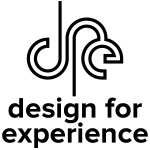One of the most popular articles we’ve published over the past couple of years was about a research method developed in Japan in the 1980s.
Named for the man who developed it, Noriaki Kano, the Kano Model offers a method for measuring the emotional reactions customers have to individual features of a product or service.
“We uncovered the Kano Model while researching ways to measure delight,” Jan Moorman writes in her article, “Leveraging the Kano Model for Optimal Results.” She continues:
Back in 1984, Noriaki Kano, a Japanese academic and consultant, disagreed with the then accepted theories on retaining customer loyalty: by addressing customer complaints and extending the most popular features. Kano intuited that retaining loyalty was far more complicated [so] he did what all researchers do: defined hypotheses and devised a study to substantiate these theories.
The agency Moorman was working for at the time translated Kano’s original paper from Japanese, discussed its merits, and modified it to suit their testing needs. Moorman’s article offers an in-depth look at the Kano Model and how they used it, and arrives at the concusion: “Our modified version of the Kano Method has become a reliable tool to assist in answering our client’s strategic questions about where to invest their design and development resources, impacting both their success and bottom line. It’s always rewarding to see clients become excited about research.”
While there’s striking consistency in the user research techniques UX practitioners use, Moorman demonstrates that there are always opportunities for tweaking existing techniques to great success. There are also altogether new methods being devised with the power to bolster research. The DfE Innovative Research Technique award is aimed at new or improved user research techniques that can benefit experience design.
If you know of agencies, companies, or teams that are devising new research methods or improving on previous methods, nominate them. If you think that your agency/company/team deserves DfE recognition, apply for this award right now!
Image of blank cards courtesy Shutterstock








